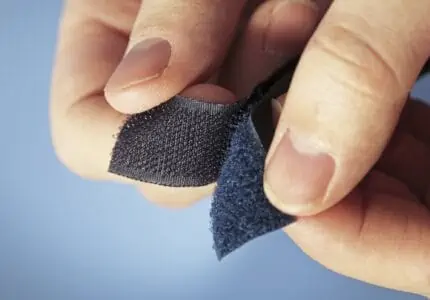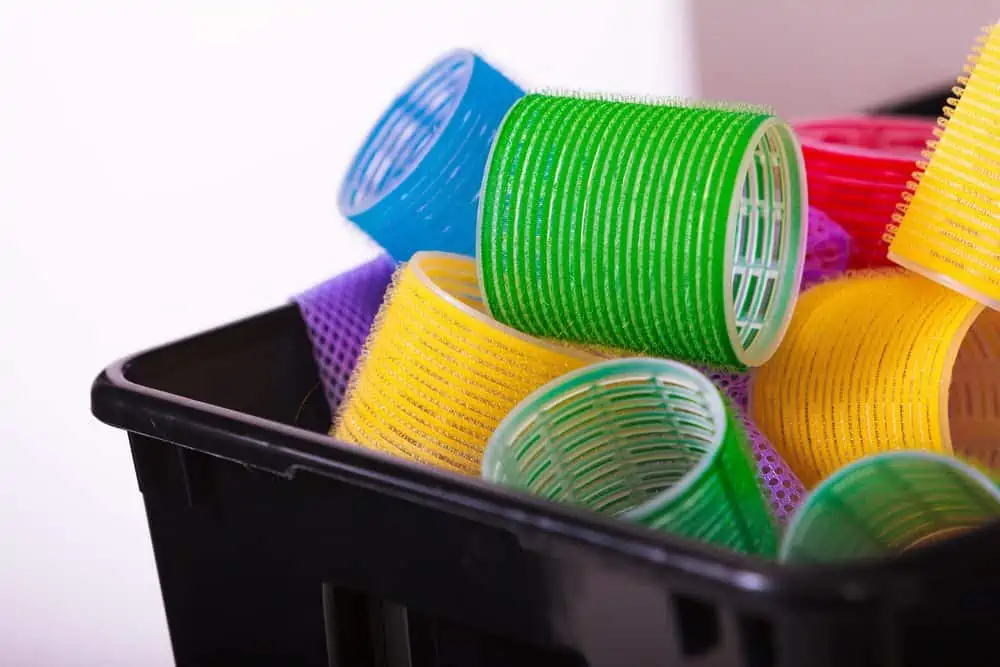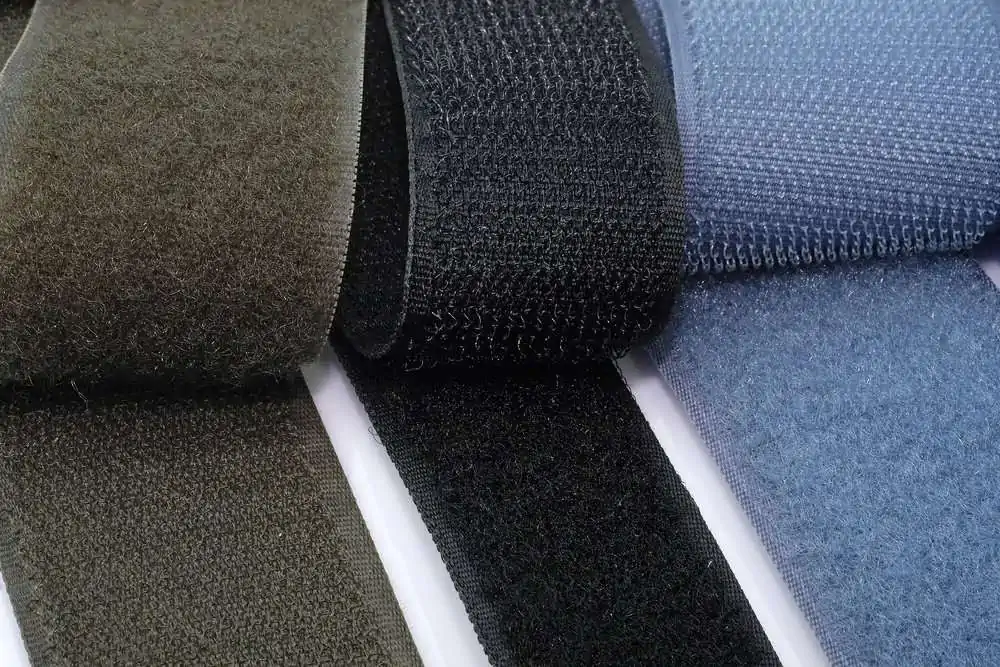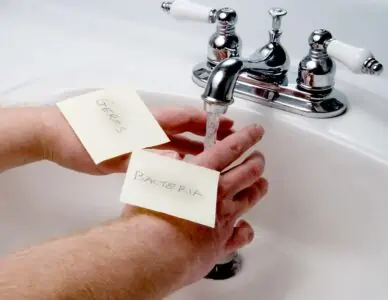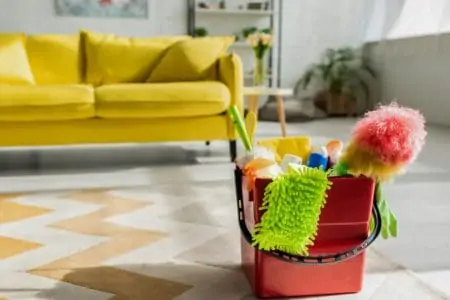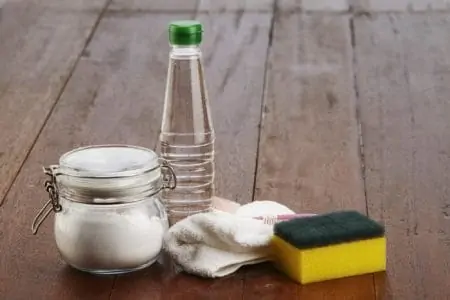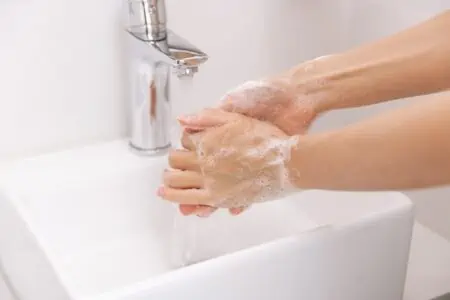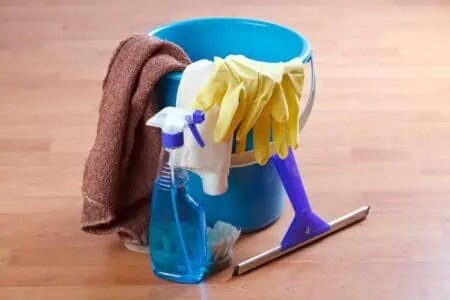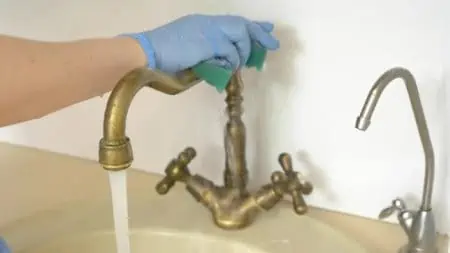When Velcro gets dirty and full of debris, it stops working properly. It’s hard to get the material to stick and stay closed.
It’s important that you know how to clean Velcro so that you can avoid it wearing down. Keep it working well by staying on top of removing dirt, hair, and other debris.
We’ll show you how to deep clean Velcro strips, straps, and rollers in seven easy steps.
Key Takeaways
- Clean Velcro by using a lint roller, fine comb, and tweezers to remove debris, hair, and lint.
- Scrub Velcro with a toothbrush dipped in warm soapy water to remove stains and restore stickiness.
- Rinse Velcro with a damp, lint-free cloth, and then air dry it in a quiet spot.
- Keep Velcro clean by closing the straps when not in use, using anti-static spray, and cleaning it regularly.
How Does Velcro Work?
Velcro is a brand name, but it generally refers to an adhesive that uses a hook and loop closure.
The tiny plastic hooks are on the bottom (scratchy) part of a Velcro closure. On the top — the fuzzy part — are the loops. The loops and hooks fasten together, connecting the two parts.
When you push the top down, the hooks get caught up in the loops. When you pull the Velcro strap up, the hooks flex until they let go of the loops.
Can You Make Velcro Stick Again?
Over time, Velcro will naturally wear down. The hooks and loops can get tired, lose their durability, and snap.
Your Velcro shoes won’t last forever, but regularly cleaning the Velcro can prevent wear and tear from happening faster. Plus, when you clean your Velcro using our tips, you can get it to stick again if it’s not too late.
How to Get Hair Out of Velcro
If you have pets, or have long luscious hair yourself, it’s common for it to get caught in Velcro straps. We have several methods for removing hair, fuzz, and lint from Velcro.
- Comb it out: Use a fine-toothed comb to brush the Velcro fibers. The hair will transfer from the Velcro to the comb, where you can remove and discard it.
- Tweezers: Pull hair, fuzz, and lint from Velcro using tweezers. This is great for small pieces that are too tiny to remove with your hand.
- Lint roller: To remove lint and fluff, try a lint roller. It’s excellent at getting surface-level debris — it can also capture hairs that aren’t super tangled up in there.
- Duct tape: Pressing down on the Velcro with duct tape can remove lint and fluff, and also hair that isn’t too wrapped up in the loops.
- Stiff toothbrush: A hard-bristled toothbrush can help to remove trapped debris. Lay the Velcro flat and brush it firmly with the toothbrush.
- Tape dispenser: A fun hack is using a tape dispenser’s cutting blades. Turn it upside down over a flat piece of Velcro and brush it with the dispenser blades. The tiny blades will work out embedded lint and fluff.
- Specialist tools: If you can get your hands on a tool made specifically for cleaning Velcro, go for it. This includes Grip Clean Fastener Cleaner or Redecker Wire Velcro.
Can You Wash Velcro?
If you’re wondering whether Velcro is compatible with a washing machine, the answer is yes. You can put items that feature Velcro (such as shoes, bibs, or jackets) in the washing machine. However, there are a few precautions you need to take.
First, clean the Velcro manually. Remove debris, hair, and fluff from the Velcro first.
Secondly, cover up the hook part of the Velcro. You can do this by closing the Velcro or putting the whole item in a mesh laundry bag. You just don’t want the hooks to cling to other garments in the machine.
Top Tips
Use cool or warm water when washing Velcro. Hot water can cause damage. Never put Velcro items in the tumble dryer.
How to Deep Clean Velcro
Let’s get into the best method for deep cleaning Velcro, removing stains, and hopefully restoring its stickiness. This method works for clothing, watch bands, shoes, and more.
- Time: 30 minutes.
- Difficulty: Easy.
What You’ll Need
- Lint roller.
- Comb.
- Stiff-bristled toothbrush.
- Tweezers.
- Bowl.
- Water.
- Laundry detergent.
- Microfiber cloth.
1. Use a Lint Roller
To start with, we want to remove surface-level dust, debris, and hair. Go over your Velcro with your lint roller a couple of times until you’ve removed the majority of surface dirt.
2. Comb or Brush the Velcro
Next, we’ll be using your comb to deep clean embedded dirt. A fine comb is the most effective, but a toothbrush is also a great option if you don’t have one.
Comb across your Velcro in short forward and upward movements. This will move lint and fluff to the top of the Velcro.
Use your lint roller to lift off the loosened pieces of dirt. Then go over your comb with the lint roller to remove fluff from its bristles. Make sure to peel off a layer of the lint roller whenever it’s full and dirty.
Continue this method until the Velcro is mostly clean.
3. Remove Stubborn Lint
After removing most lint and fluff, you can spend the next few minutes focusing on stubborn lint. First, use your comb to focus on specific areas using the above method.
If that isn’t working anymore, it’s time to whip out the tweezers. Use the tweezers to remove individual pieces of lint and fluff from the Velcro. This might take a little while, but it’s going to be worth it, especially as it can help to restore stickiness.
Repeat the three steps on both sides of the Velcro, including the hooks and loops.
4. Make a Cleaning Solution
Even if you remove debris from Velcro, you might still have stains. Let’s start by combining a few drops of laundry detergent in a cup of warm water. Mix well.
5. Scrub the Velcro
Dip your toothbrush into the cleaning solution and scrub the Velcro on both sides. Continue until the stain has lifted.
6. Rinse the Velcro
Dampen a lint-free microfiber cloth in water and wring it out, so the cloth is just slightly damp. Rinse the Velcro with the cloth, removing all traces of soapy residue.
7. Air Dry
Leave the fastener open in a quiet spot in the house to fully air dry.
Cleaning Different Types of Velcro
While our methods work across the board for Velcro, it’s important to note a few differences in the three variations.
Rollers
Hair rollers are made of Velcro. You can use a comb to brush out hair and fluff to clean them.
Gently comb down and out to pull the hair to the surface. You can remove it with your hand or pull it out with the comb.
Once you’ve removed debris from the rollers, rinse and dry them. To sanitize them, you can also soak them in a 1:1 solution of distilled white vinegar and water.
Hook and Loop
You can use the seven-step method shared above to clean hook and loop Velcro (such as those on a shoe). Make sure to repeat on both sides to remove dirt and debris from the hooks and the loops.
Hook and Hook
You will also find hook-and-hook Velcro, which is made up with hooks on both sides. This doesn’t feature loops but rather works when both sides of the hook tape are pressed together to fasten securely.
You can use the seven-step method for cleaning this type of Velcro. If that doesn’t work, you’ll want to try out our tape dispenser method. Use the blades of a tape dispenser to pull fluff and debris out of the Velcro hooks.
Make sure to move in the direction of the hooks to remove everything effectively but gently. Repeat until the hooks are clean.
How to Keep Velcro Clean
Now that you know the best way to clean Velcro, how do you keep it clean in the first place? Here are our top hacks:
- Keep it closed: When you’re not using the Velcro item, keep the straps closed. For instance, take off your shoes, and close the straps to prevent dust and debris from settling in the hooks and loops.
- Before washing: Before washing a Velcro item, close the strap. This stops it from picking up fibers during the wash cycle.
- Use anti-static spray: You can apply an anti-static spray to Velcro to prevent dust and debris from settling in the hooks and loops. Apply this after deep-cleaning Velcro.
- Clean regularly: Clean Velcro as soon as you notice fluff and lint in the fibers. Don’t leave it too long. Otherwise, it will take much longer to clean. Plus, you might never get the stickiness back.
FAQs
Getting Velcro Sticky Again
Velcro is made to last for up to 20,000 uses. In other words, it should last for years to come.
If your Velcro is no longer sticky, it’s not time to toss it out. It’s time for a deep clean. Use our tips to brush debris, lint, and hair from your Velcro. A pair of tweezers will come in handy for tiny pieces of debris.
After removing debris, scrub the Velcro clean with a solution of warm water and laundry detergent. Then rinse and air dry.
A final hack to remember is always closing the Velcro strap when the item is not in use. This prevents dust, lint, and debris from settling in the hooks and loops.
